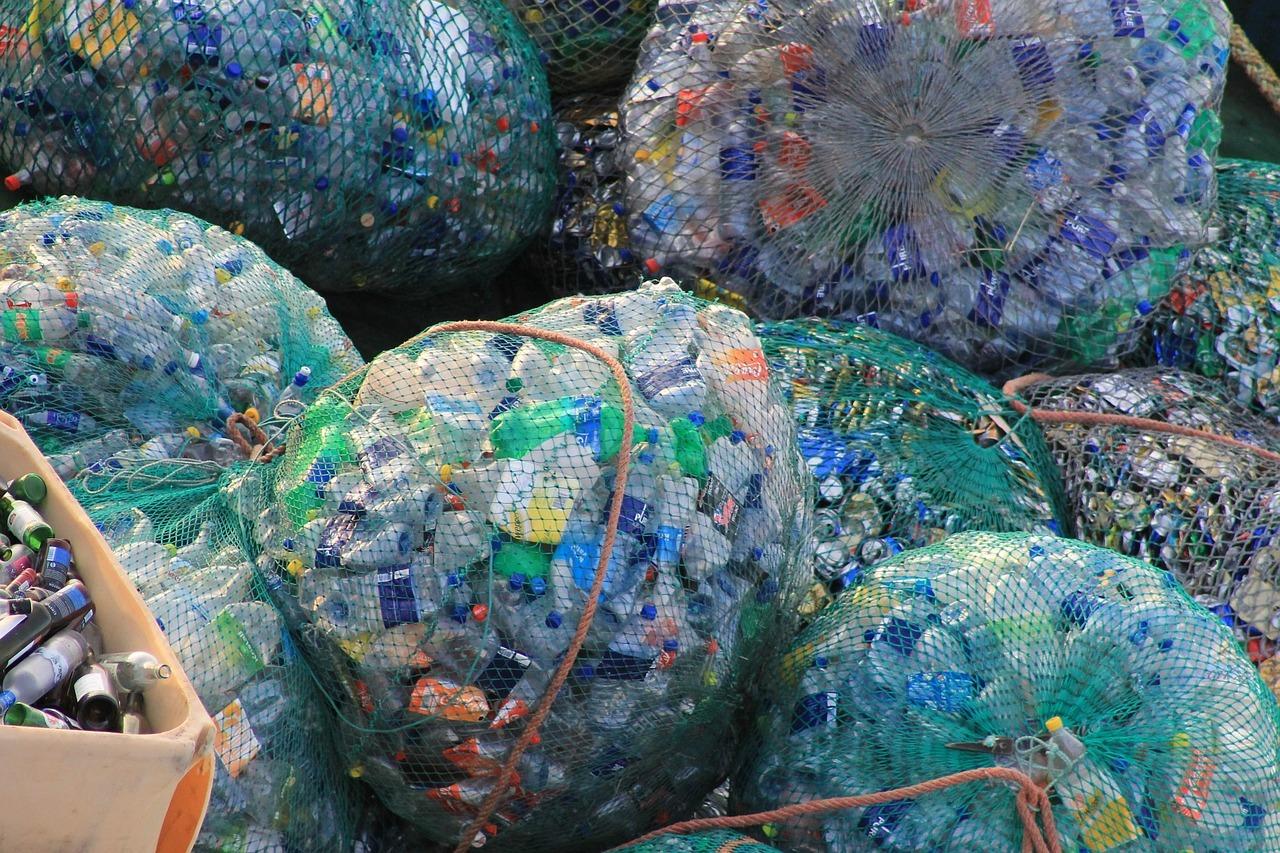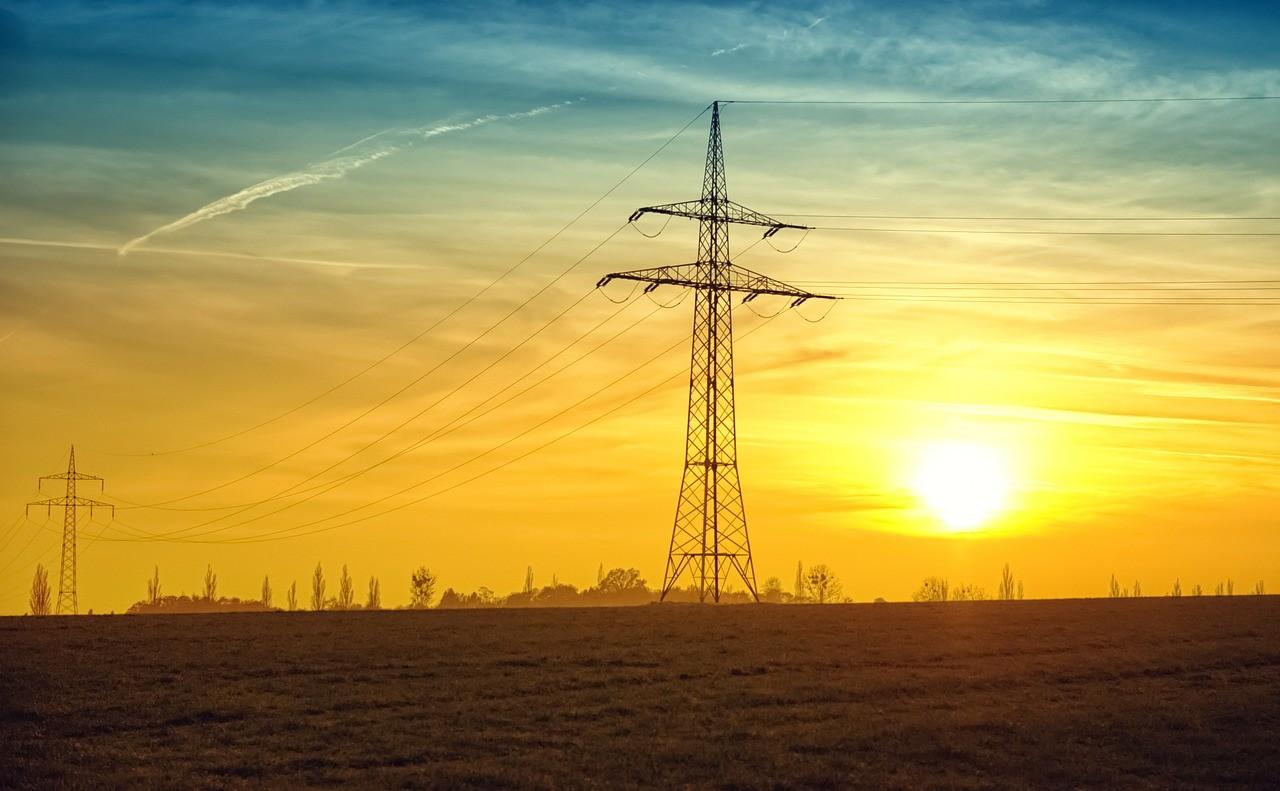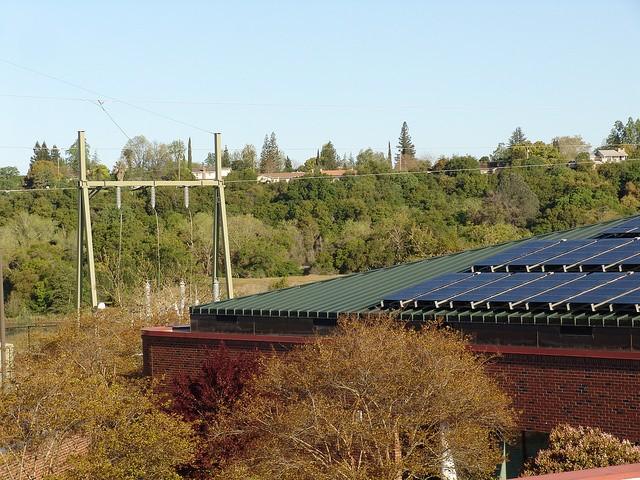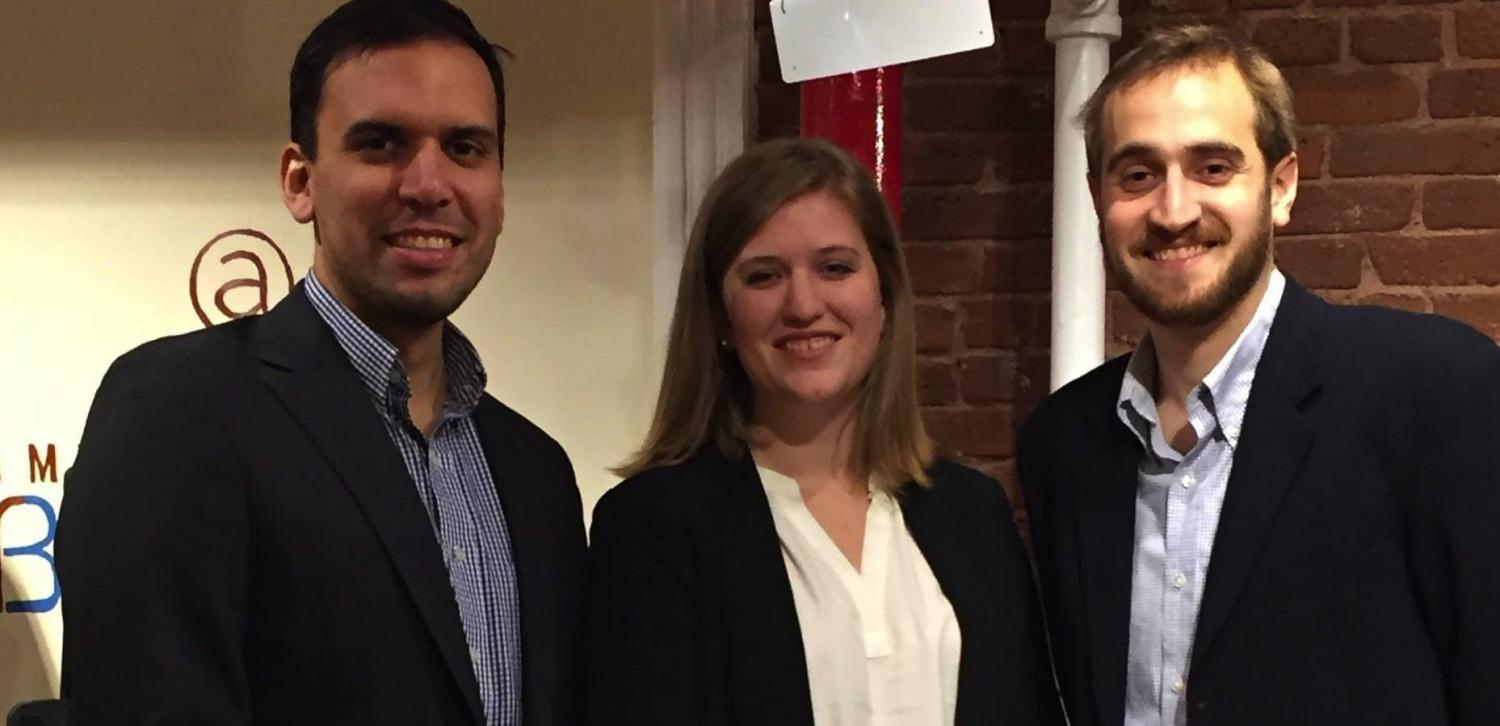Re-Realizing the Treasure in Trash


By Averill Brewer
The motivations for turning trash into treasure are clearly defined, if not purely for environmental reasons.
The realization that 5 billion new consumers will enter the market, buying things and competing for finite resources, brings on economic motivations as well -- namely that all of the trash the ‘rising billions’ of consumers will throw away can be re-purposed into a higher-valued material and re-entered into the economy, never truly becoming waste.
No treasure hunt is needed — X marks the … landfill; we humans have made it very easy to find. The only cache that exists is that of the lost opportunity of valuable materials that are buried or not recovered in the sorting and recycling processes due to inefficiencies.
The real equation is turning waste materials into long-life products. By now, we know that the recycling industry has run into a set of potentially disastrous problems, but that those in the industry and in bureaucracy are working to alleviate the impact. Problems chipping away at the dated recycling system in the United States consist of factors related to contaminated recyclables (which can spoil the recyclable and also make the overall sorting process difficult), a peak in operating costs for sorting recyclables correlated with a fall in oil prices (which makes virgin materials competitive and less expensive that recyclable raw materials as a commodity), and China’s devolved role as the United States’ main buyer of its plastics.
Plastic is the material of the century. It is the person in high school who receives the superlative “best all around." You don’t question that nomination. Plastic is well traveled and dependable; it is most likely to succeed and has triumphed for 100 years. That is why we must work to “overcome fragmented initiatives to create a shared sense of direction and to spark a wave of innovation to move the plastics value chain into positive value capture,” the Ellen MacArthur Foundation asserted in a recent report.
Ninety-five percent of plastic material, valued at US$80 billion annually, is lost after a short first use, according to the report, and only 14 percent of plastic is collected. Plastics that are recycled (5 percent) are almost always recycled into lower-value applications and are not again recyclable after use.
Re-vamping the recycling industry in the United States could ultimately depend on a highly coordinated global effort, because current innovation and improvement efforts have been too fragmented. The “lack of standards and coordination across value chains allowed the proliferations of materials, formats, labeling, collection systems, sorting and processing systems to collectively hamper the development of effective markets,” the report's authors found.
Re-processing technologies for plastics are being used in the United States. For example, CarbonLite in Riverside, California, is a recycling facility that practices a closed-loop, bottle-to-bottle system by collecting plastic bottles from material recovery facilities (MRFs). CarbonLite washes the bottles, sorts them by color, then grounds the bottles up into something resembling cornflakes. Leon Farahnik, CEO of CarbonLite, indicates one of the major issues for his company is that there is not a synchronized federally mandated bottle deposit system in the United States. Without more bottle deposit systems, there really isn’t even enough recycled plastic bottle flakes (rPET) available to sell to beverage and manufacturing companies.
MBA Polymers, a U.K.-based company founded by Mike Biddle, manufactures polymers derived from old plastic junk, essentially. He dubbed the term, “plastic mining” by asking a simple question in the beginning: if we mine minerals from the ground, why can’t we mine landfills for all of the valuable metals and plastics that can be re-purposed? Through material recovery, MBA Polymers extracts plastics in order to create its polymers. Consequently, the polymers are derived from old plastic “waste” versus directly from a petroleum source. Also, the company, claims to use 20 percent less energy for the production process than needed in petrochemical processes. Here’s Mike’s TED TALK.
The ambition of the new plastics economy is to “deliver a better system wide economic and environmental outcome by creating better after-use plastics economy and reducing leakage,” which will take joint efforts of three axioms: improving after-use infrastructure in high leakage countries, increase economic attractiveness of keeping materials in the system, and reducing the negative impact of plastic when it does escape collection/re-processing.
Image credit: Pixabay
Averill Brewer is a writer covering the circular economy. You can email her at [email protected].
Britain's biggest benevolent celebrities are . . .


by Sangeeta Haindl — The UK’s The Sunday Times has announced that rock super-star Sir Elton John and best-selling author JK Rowling are Britain’s most benevolent celebrities on the newspaper’s 2016 ‘Giving List’, each donating a large part of their fortune to charities. Golfer Rory McIlroy, global boy-band One Direction and Queen musicians Brian May and Roger Taylor also featured among the top celebrity givers. Almost 178 of the 1,000 people in the Sunday Times Rich List have donated at least a £1 million to charity in the past year.
Sir John gave £26.8m to charity last year, mainly to his AIDS foundations in Britain and the U.S. While Rowling donated £10.3m; her chosen charities were the Lumos Foundation, which is the writer’s own organisation aimed at closing down all child institutions and orphanages around the world by 2050. Plus the Volant Charitable Trust, which raises money to alleviate social deprivation and for research into multiple sclerosis, which killed Rowling’s mother.
The Sunday Times rankings showed that in total, the wealthy have given £2.66bn to charity over the past 12 months. This year the list was topped by the Sainsbury family for the third year in a row; the family who made their money as the founders of Britain’s second largest supermarket chain. They gave £220m in 2015, totaling almost 40 percent of their wealth. Well-known celebrities on the list varied from athletes to musicians who proved to be very generous. David Beckham donated £5m to children’s charities, Coldplay gave £1.7m and Ringo Starr gave£1.6m, raised by an auction of Beatles memorabilia through his own Lotus Foundation.
Earlier this year, Oxfam published a report showing that the 62 richest billionaires own as much wealth as the poorer half of the world’s population. The report flagged up that the wealth of the poorest 50 percent dropped by 41 percent between 2010 and 2015, despite an increase in the global population of 400m. While the wealth of the richest 62 people increased by $500bn (£350bn) to $1.76tn. Oxfam wants world leaders to adopt a three-pronged approach to address this disparity: cracking down on tax dodging, increased investment in public services and action to boost the income of the lowest paid. It calls for an end to the era of tax havens, which has seen increasing use of offshore centers by rich individuals and companies to avoid paying their fair share to society, denying governments the valuable resources needed to tackle poverty and inequality.
The recently leaked Panama Papers has exposed the existence of thousands of offshore bank accounts involving some heads of state, politicians, business leaders, sports and media personalities. While there is nothing illegal about moving money offshore to protect wealth, yet now a common perception of the offshore industry has evolved into a judgment that it looks like an unethical effort to avoid any social responsibility. X Factor judge Simon Cowell, golfer Sir Nick Faldo, the Duchess of York, film star Jackie Chan are all named in this “ungenerous” list, in this unfolding story.
Photo Credit:Picserver.org
Oregon Takeover Update: Birders Win, Thugs Lose


The law of unintended consequences is hard at work in the aftermath of the notorious occupation of the Malheur National Wildlife Refuge in Harney County, Oregon, by Arizona businessman Ammon Bundy and his gang of armed thugs. Bundy accomplished none of his purported goals and is now behind bars facing serious criminal charges along with his cohorts.
Conservation: 1, Thugs: 0
Bundy's stated goal was to turn the refuge over to local ranchers, loggers and miners. But instead he set off a surge of public support for national parks in general and the Malheur refuge in particular.
After the occupation began, a pair of Oregon brothers started an online fundraiser for the refuge and three other groups that drew more than $135,000 in pledges. That was just the start.
In the latest development, Oregon's Bend Bulletin newspaper reports that the local conservation group Friends of Malheur National Wildlife Refuge received $75,000 in new memberships and donations after the incident began early in January. The organization was also inundated with hundreds of new volunteer pledges.
Judging from a statement on the Friends of Malheur website, Bundy has re-invigorated the organization's mission:
"With the armed hostage-taking of Malheur National Wildlife Refuge, our nation's wildlife refuges have been thrust into the spotlight. This illegal seizure has stripped us of our rights as American citizens to make memories at this wildlife refuge. This needs to stop. National wildlife refuges belong to ALL Americans and we want Malheur back. It's apparent that few are aware of the incredible benefits wildlife refuges provide to communities and the local economy."
Earlier this month, the annual Harney County Migratory Bird Festival at Malheur enjoyed a banner season with sell-out events. Local stakeholders attribute an increase in attendance to Bundy, as reported by Oregon Public Broadcasting:
Chelsea Harrison directs the Harney County Chamber of Commerce. She said an upside of the occupation is that it attracted new birders and visitors for the three-day festival. Registration is up significantly from last year.“The name was out there, and it did help people realize that there’s a beautiful refuge here,” said Harrison.
According to Friends of Malheur, for each federal dollar appropriated to run the refuge, the local economy gains seven. The Migratory Bird Festival is an important seasonal economic driver for communities in and around the Malheur refuge, and its popularity demonstrates the extent to which Bundy was out of step with local interests.
Virtually no local stakeholder groups supported Bundy's actions. In fact, the public record indicates that local ranchers worked with the Bureau of Land Management to establish the Malheur refuge as a national model for successful business engagement with public conservation goals.
Bundy and unintended consequences
In another new development, Bundy appears to have prompted the U.S. Interior Department to launch a new study aimed at quantifying the economic benefits of conservation.
Interior Secretary Sally Jewell described the new campaign in a speech at the National Geographic Society on April 19:
"By producing credible data on the tangible economic benefits of public lands, we can help the public and Members of Congress better understand the benefits of investing in them."Industry estimates show that consumer spending for outdoor recreation is greater than household utilities and pharmaceuticals combined – and yet the federal government has never fully recognized or quantified these benefits. This project is the start of a multi-year effort to count these contributions in a comprehensive and impartial way."
According to one study cited by the Interior Department, in 2012 the outdoor recreation industry generated $646 billion in economic activity and supported more than 6 million jobs.
More unintended consequences
The unintended consequences don't stop there. After Bundy was apprehended, he issued a jailhouse video plea for support that directly precipitated the arrest of his father, Nevada rancher Cliven Bundy.
The elder Bundy was previously sequestered on his home turf, avoiding the consequences of a massive armed standoff with federal agents after the Bureau of Land Management tried to remove his unauthorized "trespass cattle" from public land in Gold Butte, Nevada.
That area remains a no-go zone for federal workers due to the continued threat of armed violence, so the cattle are still in residence. However, Cliven Bundy is not. Prompted by his son, he flew to Oregon. The choice of air travel guaranteed that law enforcement officers could arrest him unarmed and harmless upon his arrival at Portland International Airport.
Through his belligerent approach, Ammon Bundy also revealed that the so-called "patriot" movement is a sham. This network, also known as the "militia" movement, advocates against federal law enforcement and argues that the county sheriff is the only local law authority recognized by the U.S. Constitution.
This "constitutional sheriff" theory is described in detail by the Constitutional Sheriffs and Peace Officers Association. Here are some snippets circulated by the Independent American Party (not to be confused with the American Independent Party):
"The county sheriff is the line in the sand. The county sheriff is the one who can say to the feds, “Beyond these bounds you shall not pass.” This is not only within the scope of the sheriff’s authority, it’s the sheriff’s sworn duty."[snip]
"I would hope you would work to arm and train yourself, AND educate your Sheriff to his sworn oath of office and his duty to PROTECT and SERVE."
In the Malheur case, Bundy did attempt to "educate" Harney County Sheriff David Ward for weeks leading up to the occupation. When Ward refused to come over to his point of view, Bundy demonstrated that the "constitutional sheriff" theory is just that -- a theory. In practice, the "patriot" movement only recognizes certain sheriffs who enforce their interests.
A recent interview with Sheriff Ward reveals just how far the movement's practice is disconnected from their theory. A military veteran, Ward describes an elaborate campaign of harassment against himself, other officials and the local community -- including "saber rattling" and intimidation by Bundy's armed gang, as well an "Internet war" in which his emergency dispatch center was overwhelmed by calls.
The Spokesman-Review newspaper highlights one particularly revealing part of the interview:
During the standoff, Ward said, his primary concern was keeping innocent civilians out of the line of fire, because some of the militants stayed in town and continued to follow members of law enforcement and their families.“It was a very trying time,” Ward said. “I looked over my shoulder during that time more than I did in Afghanistan and Somalia.”
As for the Bundys, their repeated requests for bail have been denied, as they are considered flight risks who would endanger the community.
Photo (altered): Sandhill cranes at Malheur National Wildlife Refuge via U.S. Fish and Wildlife Service.
5 Technologies Driving California’s Clean IoT Electricity Strategy


California is again driving the world toward technologies that will disrupt how we live and work. This time California’s focus is on commercializing clean tech. The state is pioneering technologies to achieve a 40 percent reduction in greenhouse gas emissions by 2030.
But that is just the environmental element of the state’s technology strategy. California seeks to make clean energy and a smart Internet of Things (IoT) system the world’s dominate energy strategy. The state ambitiously seeks to redesign the world's cars, homes and businesses to do more, cheaper and cleaner.
This is not a watermelon strategy. California sees a gold rush opportunity to be the global clean tech/smart IoT technology leader. This strategy is an integral part of the state's economic development ambitions. And it is already demonstrating results. California is growing its economy faster than the U.S. economy while also reducing climate-changing emissions.
The first of this two-part series profiled the four drivers behind California’s tech ambitions for a clean, lower-cost and smart IoT electricity system. This second article identifies the five technologies California is commercializing to deliver a clean/smart IoT electricity system that will change how we live, what we drive and how we operate our businesses.
Seven elements of California’s clean, smart IoT electricity strategy
California’s approach to electricity mirrors their success in pioneering IoT and the cloud. The state is attempting to create a smart-electricity system that links consumers, buildings, cars, suppliers, digital technologies, appliances and price signals. This strategy has these seven moving parts:
- IoT technology
- Renewable energy
- Battery storage
- Real time pricing
- Reengineered utility role
- Electric cars
- Carbon pricing
Ironically, the challenge is not technological. The enabling technologies have been invented. These technologies are now on an economies-of-scale and technology-maturation path that will deliver competitive unit costs.
Special-interest resistance is the barrier to California’s tech strategy. There is significant resistance from special interests, each with their own motivation. For example, utilities want to protect their role and profits. Customers want lower prices to motivate them to choose the disruptive solution. Vendors are competing against the utilities and themselves to win market share.
Special interests are impacting policy implementation. California's strategy is being buoyed by the legislature. In support of the legislature, the state’s governors have issued a series of executive orders setting ambitious goals for state agencies. Separate government agencies, including the California Public Utility Commission, California Energy Commission and California Air Resource Board, are enacting rules to comply with legislation and executive orders.
Politically, California is moving faster than any state, or country, toward commercializing a clean-tech and smart IoT electricity system. But in realty, the state’s political/government progress -- influenced by special interests -- can be characterized as two steps forward and one step back.
Five technologies driving California’s clean tech/smart IoT electricity system
Five technologies are at the core of California’s technology vision. These technologies are:
- Smart buildings. California is radically revising its building codes to make Zero Net Energy buildings the permitting standard. Where monopoly utilities defined electricity in the 20th century, California’s vision is that smart buildings will define it in the 21st century. ZNE buildings are technologically feasible today. California’s strategy is to make them affordable. ZNE commercialization is being realized through a massive reduction in technology cost, functionality and connectivity. The deliverable will be buildings and homes that optimize for lowest electricity cost, highest reliability, greatest comfort, highest security, seamless connectivity and cleanliness. ZNE is the technology future for America’s homes, offices, stores and factories.
- Onsite solar generation. Solar electricity is at price parity, or cheaper, with most utilities’ retail prices. In addition, solar is more reliable. If the sun is shining (including cloudy days), solar panels will produce electricity. Panel failure is very rare because there are no moving mechanical parts. Today, most solar systems are designed so if one panel fails, the others still operate. Utility and regulatory policy are the national implementation barrier to on-site solar. The day is coming when electricity prices will rise dramatically after domestically-produced natural gas prices align with global natural gas market prices. When that day arrives, there will be a customer (voter) stampede for rooftop solar that will overcome today’s utility/regulatory resistance.
- Onsite batteries. Onsite batteries are the next technology leap for solar and wind power. A new generation of battery technology is coming online in California. The state is creating demand for the battery industry like it did for the solar industry. The result will be a dramatic drop in price gained through manufacturing economies of scale. The industry is also gaining lower prices through incremental technology advancements. While still costly, California is driving batteries toward price-competitiveness with the current utility system of using fossil-fueled peak power plants.
- Smart grid. Too often the utility concept of a smart grid is that the utilities will be the smart ones. Utility smart meters are seen as the hub around which customers operate. However, the tech history points to the smart grid being a shared IoT. Smart appliances, solar systems and batteries will interface with a smart grid just like computers and smartphones interface with the Internet. ZNE buildings will search the smart grid and buy or sell electricity based on price, cleanliness and reliability. Like Amazon Web Services, utilities or a similar agency will host the grid and provide services that are least cost, clean and reliable.
- Electric cars. California has the goal of 1 million electric cars on the road by 2024. Electric cars are part of the state’s clean tech/smart IoT strategy. Electric cars are already fuel price competitive with gasoline cars at less than $1 per gallon gas prices. GM and Tesla are on track to introduce electric vehicles with 200-mile single-charge ranges that are price competitive with the average retail new car price. The real tech leap will be electric and autonomous driving cars. California’s cities are pioneering urban transportation models based on IoT, shared economy apps like Uber and electric/autonomous cars to make commuting faster, easier, cheaper and cleaner. What city or commuter would not want to buy that!
Silicon Valley’s Next Bubble Could Be an Even More Destructive Burst


One would think that Silicon Valley and the tech sector at large would have learned from the dot-com bust of 1999-2001. But the money thrown at companies such as Uber and Airbnb makes backing for the likes of Yahoo and eBay in the 1990s seem like the spry social enterprises we often write about on TriplePundit. Of course, some tech companies, such as Google, eBay and venerable Yahoo before its recent struggles, ended up faring spectacularly well. Of course, there were also the doozies such as eFrenzy.com (find someone to do a home repair for you), Pets.com (not even that sock puppet could save the company from its spending ways), Webvan (it collapsed as quickly as this grocery delivery service reached its billion dollar valuation) and GeoCities (if you had a GeoCities website then, you’re loathe to admit it now).
Well, some of the recent failures in Silicon Valley make those aforementioned digital ghosts seem like a bad night of poker. There was Shuddle, the Uber-like service perfect for parents who were hell-bent on laying out their kid’s long-term plans to get into Harvard starting at the age of three — the service moved kids to all kinds of extra-curricular activities around town, so they could build their college applications while sparing their parents the hassle of driving to chess and Minecraft-programming lessons. On the murkier side there is Theranos, the miraculous blood-testing company that landed its founder and CEO, Elizabeth Holmes, on all kinds of impressive lists before it turned out the technology was not exactly peer reviewed and tested . . . and is now being investigated by the Securities and Exchange Commission (SEC). Those who live outside the Bay Area bubble have guffawed at the ridiculous amounts of money that has chased many a startup and entrepreneur, or as the cantankerous New York Post recently described, “any college dropout who’s got a nice smile and a fancy smartphone.”
Okay, so maybe describing these “slicksters with their matching T-shirts, hoodies and sneakers,” is going a bit far, but that New York-based tabloid has made a point—they have built what many have called the “unicorn” economy. These privately-held companies, which boast a valuation of over $1 billion, often have dubious business models and sketchy revenue streams, in turn have nudged the Silicon Valley economy close to the edge of a cliff. Of course, some observers will point out the successful unicorns can turn into a success story such as Facebook. Add up the successes when you include companies such as Salesforce, and of course, internet giant Google, and you more than wipe out some losses that occur along the way.
The problem is that as VentureBeat has noted, there are well over 200 unicorns across the globe that together, are worth about $1.3 trillion—with about $175 billion in investor funding. Half of those companies are in California. And these companies’ spectacular valuations are in part why the average home price in Cupertino is almost $1.9 million, while up the road on I-280 in Palo Alto, the average home is selling for over $2.5 million.
So as venture capitalist Bill Gurley discussed last week in a 5,000+ word op-ed, there is cause for worry. Silicon Valley, and its unicorns, are ensnared in a vicious circle: these companies are taking investors’ money at valuation rates that make no sense; those venture capitalists that were the first to sink in money don’t want to see those valuations decrease as that could hurt the quest to raise more funds down the road; the companies can’t or won't go public because that means far more disclosures (as in the truth) are required. That in turn can lead companies to become desperate and borrow money from the savviest investors, or who Gurley describes as “sharks.” These sharks will only release funds if they are granted “dirty term sheets,” as in preferential liquidity rights, ratchets (when a company must dole out the difference between an earlier higher valuation and the later lower valuation) and guaranteed IPO returns. The result is that if a company goes south, the sharks will win any feeding frenzy, leaving the initials with the crumbs, or as the saying goes, completely screwed.
There are alternatives to that nightmarish scenario. Gurley explains that companies need do what they should be focusing on in the first place: make money. Forget the moves taken to soar to a sky-high valuation, as a multibillion-dollar valuation does no one good if it goes belly-up. And ditch that ego, and seek funding at a lower valuation. And of course, become a public company: everyone laughed at Facebook when its first several months as a public company were rocky, but few are laughing now.
Some say that the tech sector in Silicon Valley is more of a leak than a bubble as startup money has already slowed down this year. And as some companies fall by the wayside, others pick up where those companies have failed, making markets more efficient. After all, a metropolitan area needs only three or four food delivery services, not the 30 or 40 that dot the Bay Area landscape now.
But the fact is that many of these unicorns have not been transparent about how, where and the amount of money they are making. As as we’ve seen in the tech, real estate and even the energy sector, it only takes a few dominoes to tumble before many fall. But many Bay Area residents are already over-leveraged in a very overheated real estate market. And these unicorns have more than their fair share of suppliers and service providers, who will suffer a boot on the neck if these companies go down. It’s time for these companies to let go of bragging rights and get expectations back down to earth. After all, a soft landing in any situation is far more comfortable than a crash.
Image credit: Shuddle
Organic Meat and Eggs Could Soon Be Even Better


The U.S. Department of Agriculture (USDA) just released new standards for how organic producers raise livestock, which could mean that future organic eggs and meat will come from more humanely-treated animals.
Did you know that current organic standards include few protections for animals? That's right, and frankly, it is quite jarring to realize that animals raised to produce organic eggs and meat, until now, could do so in basically the same inhumane conditions as animals on those horrific factory farms, minus the chemical inputs, of course.
This is a real problem, because many consumers believe animal welfare standards are part of the organic label, leading to confusion at the grocery store.
“One of the chief reasons shoppers choose to pay more for organic foods is because they believe animals raised under organic systems are treated better," the Animal Welfare Institute said in a press statement. “The proposed regulations represent the first comprehensive federal standards for the raising of farm animals in the United States.”
In fact, the new regulations would go beyond this and make some big changes in livestock health, as detailed in a lengthy Q&A from the USDA:
"This proposed rule would provide specificity on livestock health care practices, such as which physical alteration procedures are prohibited or restricted for use on organic livestock [and] would set separate standards for mammalian and avian livestock living conditions to better reflect the needs and behaviors of the different species, as well as related consumer expectations."
In essence, this would change what organic means when we go shopping, which is important. No other standard or label is as huge as organic, and improving it would have major positive impacts for the country.
“Organic is the most comprehensive standard for agriculture and so it must promote sound animal welfare principles,” said Paige Tomaselli, senior attorney for the Center for Food Safety, in a press statement. “To be effective, that standard must include necessary safeguards to ensure animals are well-fed, healthy, have access to the outdoors, are raised in an environment that allows them to engage in natural behaviors and are humanely slaughtered.”
One of the key changes will more clearly define what should be, frankly, quite simple. It will ensure that “outdoor access” means that chickens can actually go ... outside. It would also mandate minimum space allotments for animals, and include more regulations on humane treatment in slaughterhouses.
Unfortunately, these standards may take time to come into place, partly because the meat and egg industry has deep pockets and will do anything to stand in the way of progress at the cost of their profits. This includes major organic producers, such as Organic Valley, which benefit from consumers perceiving them as having the same standards as far more ethical competitors.
The power of the food industry is why we did not even have a national organic standard until 2000. Others believe the standards don't go far enough, citing the paltry space requirement of 2 square feet in chicken regulations as barely acceptable.
In the best-case scenario, these standards won't go into effect for five years, after what was already a five-year drafting process. Such is the state of progress in agriculture, where inertia is the game. For now, I'll stick to the strict standards of organic, certified humane eggs and an otherwise vegetarian diet. Hopefully, someday, we'll have a USDA that puts the concerns of consumers ahead of producers. These regulations, if implemented, would be a welcome step in the right direction toward a more humane, sustainable food system.
Image credit: Ivan Welsh via Flickr
EPA Renews Focus on Public Health


Established in 1970 with the support of a Republican president, Richard Nixon, in order to find solutions to reverse America’s water and air pollution woes, the Environmental Protection Agency (EPA) has become a political football as of late. The agency’s current head, Gina McCarthy, was subjected a lengthy confirmation process in the Senate, which included answering over 1,100 questions, 600 of which came from Sen. David Vitter (R-Louisiana). The drama became so ridiculous that even Christine Todd Whitman, the administrator of the EPA under George W. Bush, lamented the hyper-politicization of McCarthy’s confirmation. Then last fall, Rep. Paul Gosar (R-Arizona) said he wanted Congress to impeach McCarthy over trumped-up charges of “perjury,” when the reality is that she was doing her job the way she saw fit.
Those battles aside, now McCarthy is calling for the EPA to take another step that is sure to drive Republicans insane. In an op-ed that celebrated the agency’s accomplishments over the past 45 years, McCarthy called for the EPA to take on more of a leadership role in public health. She seeks to add more health experts to the EPA’s staff, ensure public health care considerations are integrated into the EPA’s decision-making process, and find ways to work closer with other agencies such as the Centers for Disease Control and Prevention (CDC). The latter move is particularly important, as federal agencies are often perceived as behaving as personal fiefdoms instead of looking out for the public interest.
Such a call is hardly new. Almost 30 years ago, an academic study highlighted the fact that many of the EPA’s directives, as in tackling problems related to air and water pollution, were expressly designed to improve public health across the U.S. But as an independent agency, it is completely separate from the Department of Health and Human Services and its agencies such as the CDC and National Institutes of Health. So, while the EPA clearly has its public health mandates, it is, as is the case with many agencies, operating in its own silo -- lacking relatively few experts in public health.
Past EPA administrators have also asserted the EPA’s leading role in this country’s public health. Opponents in turn have claimed the agency’s mandate either has nothing to do with such policy or lacks any accomplishments compared to achievements in immunization and sanitation. Nevertheless, as many environmental and health advocacy groups posit, the stubborn fact is that pollution over the years has presented not only correlation, but causation, to health problems across the U.S. We see the result of lax oversight now with the ongoing Flint water crisis in Michigan; and the struggle with air quality is most acute here in California, where as many as seven of the 10 most polluted cities in the U.S. are located.
Meanwhile many mainstream global organizations, such as the World Bank and the Organization for Economic Cooperation (OECD), have highlighted the economic costs along with the health costs resulting from pollution. In any event, the EPA is highlighting more of its work and research related to public health, from the use of chemicals to even problems with bedbugs. The reality, however, is that federal employees -- with their agency heads leading by example -- need to reach across what they see as the boundaries of their agencies’ work. If McCarthy can really find a way to convince these multiple government departments to share resources and work together, that would be an accomplishment with which few on either side of the aisle would argue.
Image credit: U.S. EPA
San Francisco to Require Rooftop Solar On New Construction


San Francisco, the city by the bay, is serious about tackling climate change. To that end, last week the city’s board of supervisors passed an ordinance that requires the installation of solar panels on all new residential and commercial buildings built in the city, beginning Jan. 1, 2017.
Introduced by Supervisor Scott Wiener, the ordinance passed unanimously, making San Francisco the first major U.S. city to require that solar panels be installed on new construction. Two smaller California cities have already passed similar ordinances.
The board cited a number of reasons why San Francisco needs the ordinance based on its “climatic, topological, and geological conditions.” And those conditions include the city being a coastal one that it is on the tip of a peninsula. As such, it is vulnerable to sea-level rise. The ordinance acknowledges that the city is “already experiencing” the effects of “excessive carbon dioxide emissions” as rising sea levels threaten its shoreline and infrastructure. Already, rising sea levels “have caused the city to expend funds to modify the sewer system,” the ordinance reads.
“By increasing our use of solar power, San Francisco is once again leading the nation in the fight against climate change and the reduction of our reliance on fossil fuels,” Supervisor Scott Wiener said in a statement. “Activating underutilized roof space is a smart and efficient way to promote the use of solar energy and improve our environment. We need to continue to pursue aggressive renewable energy policies to ensure a sustainable future for our city and our region.”
The new ordinance goes beyond a California law that requires 15 percent of roof space to be solar-ready, or shade- and obstruction-free. It will also help San Francisco meet its goal of reducing greenhouse gas emissions 25 percent below 1990 levels by 2017; by 40 percent below 1990 levels by 2025; and 80 percent by 2050.
The new rule is expected to increase the number of solar panels in the city by 50,000 and save 26.3 million tons of carbon a year on new construction, according to two former commissioners, who wrote an opinion piece supporting it.
San Francisco has long been a leader in dealing with climate change. In 2008, the city became one of the first in the U.S. to require its departments to track their carbon footprints and develop annual climate action plans that outline steps for environmental improvement.
California is a renewable energy leader
As a California city, San Francisco is located within a state that is a renewable energy leader. California law requires that utilities get 33 percent of their power from renewable sources by 2020. California also has statewide goals of reducing GHG emissions by 40 percent below 1990 levels by 2030 and getting 50 percent of its electricity use from renewable sources by 2030.
California’s renewables operating capacity as of October 2015 is 21,700 megawatts, including 3,500 MW of self-generating solar photovoltaic (PV) energy. While self-generating solar, which is usually rooftop panels, has increased, so has large-scale renewable generation. In 2010, California generated 6,600 MW of large-scale renewable power. This grew to 14,300 MW by 2015.
On the local level, six California cities made the list of the top 20 solar cities in the U.S. A report by Environment California ranked cities by the total amount of installed solar PV capacity by the end of 2015. Three California cities made the top five spots: Los Angeles ranking No. 1, San Diego No. 2 and San Jose No. 5.
There is a reason Los Angeles topped the list. In 2015, Los Angeles released its Sustainable City Plan which calls for increasing the city’s solar PV capacity. And Los Angeles already has more installed solar power than any other U.S. city, but it has capacity for much, much more. A recent study by the National Renewable Energy Laboratory (NREL) found that Los Angeles has the capacity for 9,000 MW of rooftop solar PV, which would provide 60 percent of the city’s power. Los Angeles now has 215 MW of solar PV capacity.
Image credit: Flickr/Western Area Power
Students Share Tips for 'DIY' Sustainability Consulting


This article is part of a series by students at Bard College’s MBA in Sustainability. Principles of Sustainable Management is a foundational class for all Bard MBA students. It delivers ecological and social literacy, the frameworks and tools used by sustainability professionals, the business case for more responsible treatment of people and planet, systems thinking and integrated bottom line accounting.
By Mariana Souza, Martin Lemos and Simon Fischweicher
How can you get the experience you need for your dream job? How do you get sustainability consulting experience without working for a sustainability consulting firm? Our team asked these questions as we finished our first year of the Bard MBA in Sustainability program.
Our answer: If you can’t join one, become one! We took a do-it-yourself approach and launched our own independent consulting group, FWD Impact. Based on our experience, here are a few recommendations for building a sustainability consulting portfolio before graduation.
Get on the phone
Once you have a team, you need to learn as much as you can about other sustainability consultants and the businesses that hire them. The best way to do this by is picking up the phone. Have conversations with businesses, consultants, and experts early and often.
Who wants to spend an hour talking to a few graduate students? The answer is: most sustainability professionals. People working in the field have been where you are and are happy to help if they have a few moments are excited to share. These early calls are probably not going to lead to any client projects, but they will help you learn what is out there and where your skills, knowledge and experience can add value. Use your professors and classmates to find connections.
Tip: Ask for 30 minutes. Lackluster calls won’t drag on forever, and interesting ones will stretch to an hour or lead to a follow-up conversation.
“What do you do?”
This is a question we fumbled through over and over again early in our process: “Uh, sustainability consulting … materiality … stakeholders …” We learned that sustainability consulting is not an acceptable answer, and that a laundry list of every possible service offering wasn’t much better.
After bumbling through a few conversations, we took some time to think about what the market needs and what we had to offer.
- Do you have technical expertise? Conducting energy audits and improving operational efficiency are important for businesses and nonprofits with high facility costs. Companies want to be seen as responsibly managing their carbon footprint in a post-COP21 world.
- Do you have communications experience? Mission-driven businesses often need help with messaging and storytelling.
- Are you a system-thinker? Understanding the complexities of sustainability opportunities and threats requires time and expertise. Corporations benefit from building competitive benchmarks and conducting supply chain risk assessments.
Be sure to align what the market needs with the skills you want to build for your post-MBA career. What tools are you missing for that dream job? What kind of experiences do you want to add to your professional portfolio?
Once you think you have a pithy core service offering, try it out. Yes, that means get back on the phone. Activate your entire network from school, work, family and friends to get large corporations, small businesses, nonprofits, sports team, museums and everybody in between to take your call. Ask about their challenges, and let them know what you do. Test different angles and entry-points to the conversation. We used faculty and colleagues in our program to get initial leads.
Tip: As soon as you have a workable pitch or service offering, develop your Web presence. We started by building a website on Squarespace. We set up a LinkedIn page with our logo, allowing us to include FWD Impact project work in our LinkedIn Experience. We also maintain a Twitter account for thought leadership and reactions to significant events like #COP21 and #ParisAgreement.
Image courtesy of FWD Impact
Mariana Souza, Martin Lemos and Simon Fischweicher co-launched the sustainability consulting firm FWD Impact as a Capstone project in the Bard MBA in Sustainability program. Learn more about the FWD Impact team.
"High sustainability" companies are better businesses


“High sustainability” businesses significantly outperform “low sustainability” companies in two ways: lower volatility on the stock market and by a six percent higher return on equity. That’s the finding of a study by Professor Ioannis Ioannou, Assistant Professor of Strategy and Entrepreneurship at the London Business School. His report examined two groups of public U.S. companies that were almost identical except for their commitments to sustainability. The research tracked practices and strategies from 1993 to 2011 to arrive at its conclusion of stock market success for the “high sustainability” group. How did this happen? The bottom line answer is that the board in a high performing sustainable company answers to the organisation itself, not only shareholders. Dr. Ioannou reviewed his study as part of the Guardian and The Observer’s second annual sustainability day.